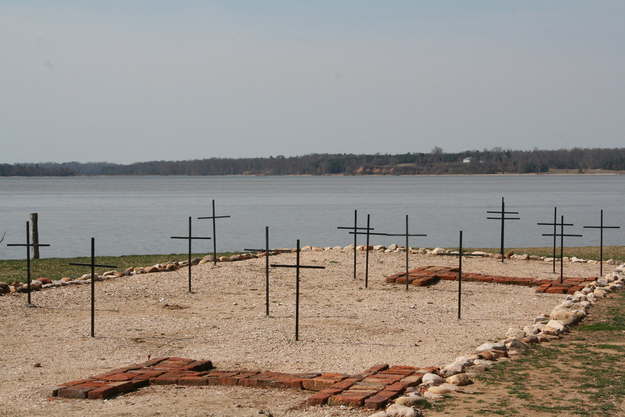New archeological and forensic evidence reveals that the first settlers in Virginia's Jamestown Colony resorted to cannibalism during the "Starving Time" winter of 1609, scientists announced Wednesday.

The butchered remains of a 14-year-old English girl were discovered on the site of Fort James amidst animal bones in the summer of 2012 by a team from the Jamestown Rediscovery Project and Preservation Virginia.
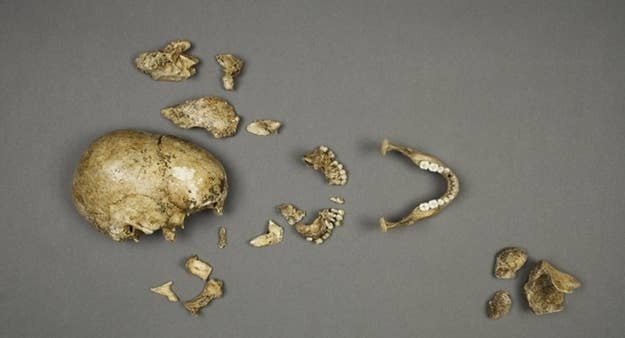
The remains were discovered approximately 2.5 feet down in a 17th century trash deposit in the cellar of a building built in 1608 inside the James Fort site. "We found a deposit of refuse that contained butchered horse and dog bones," chief archeologist William Kelso told Smithsonian Online. "That was only done in times of extreme hunger. As we excavated, we found human teeth and then a partial human skull."
This is the first physical evidence of cannibalism of Europeans in a "New World" colony, although various contemporary accounts mention rumors of starving settlers resorting to the practice in order to survive.

Jamestown Colony was founded in 1607 by 104 settlers, but only 38 were still alive when supply ships arrived nine months later.
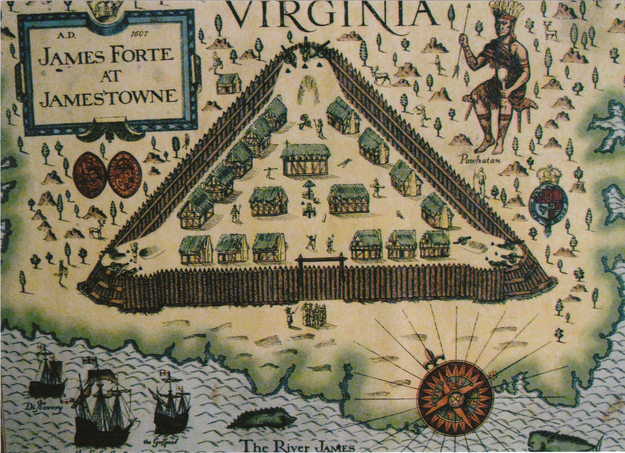
By August 1609, settlers were increasingly dependent on supplies from England, but most of the food carried by the six ships that arrived that month had been spoiled or consumed during the long, stormy crossing.

The colony's leader, Captain John Smith, had forged a friendly relationship with the Powhatan Indians, but he was forced to leave with the fleet on its return trip to England. Relations with the Powhatans deteriorated in his absence.
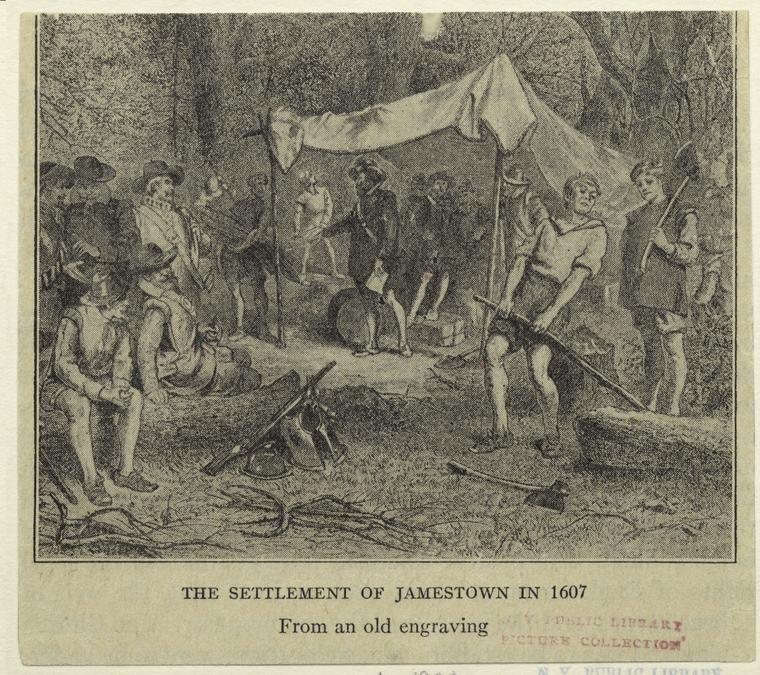
The Powhatans launched a war against the colonists in November 1609, killing any settlers that they found outside Jamestown. Cut off from outside help with few supplies, the colonists dubbed the desperate winter of 1609 the "Starving Time."
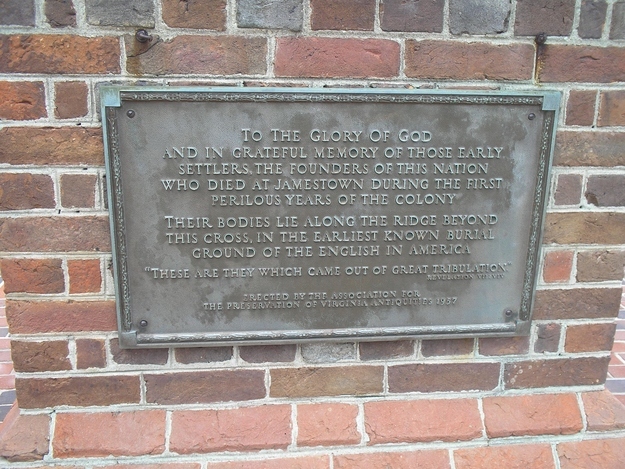
George Percy, the colony's temporary leader, wrote an eyewitness account of the "Starving Time" that details the desperate conditions and mentions instances of cannibalism:
"Now all of us at Jamestown beginning to feel that sharp prick of hunger, which no man truly describe but he which hath tasted the bitterness thereof. A world of miseries ensured, as the sequel will express unto you, in so much that some to satisfy their hunger have robbed the store, for the which I caused them to be executed. Then, having fed upon horses and other beasts as long as they lasted, we were glad to make shift with vermin, as dogs, cats, rats, and mice. All was fish that came to net to satisfy cruel hunger, as to eat boots, shoes, or any other leather some could come by. And those being spent and devoured, some were enforced to search the woods and to feed upon serpents and snakes, and to dig the earth for wild and unknown roots, where many of our men were cut off and slain by the savages.
And now, famine beginning to look ghastly and pale in every face . . . nothing was spared to maintain life and to do those things which seem incredible, as to dig up dead corpses out of graves and to eat them, and some have licked up the blood which hath fallen from their weak fellows. And amongst the rest, this was most lamentable; that one of our colony murdered his wife, ripped the child out of her womb, and threw it into the river, and after, chopped the mother in pieces and salted her for his food. The same not being discovered before he had eaten part thereof, for the which cruel and inhumane fact, I adjudged him to be executed, the acknowledgement of the deed being enforced from him by torture, having hung by the thumbs with weights at his feet a quarter of an hour before he would confess the same."
The 14-year-old girl, dubbed "Jane of Jamestown" by researchers, died of unknown causes during the "Starving Time," according to Doug Owsley, one of the foremost forensic anthropologists in the world. Owsley spent months analyzing the remains.

“Historians have gone back and forth on whether this sort of thing really happened there,” Owsley said in a press conference Wednesday. “Given these bones in a trash pit, all cut and chopped up, it's clear that this body was dismembered for consumption.”
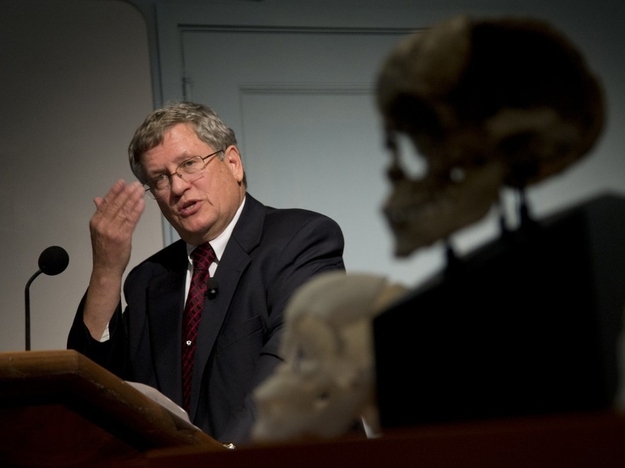
"The desperation and overwhelming circumstances faced by the James Fort colonists during the winter of 1609–1610 are reflected in the postmortem treatment of this girl's body," said Owsley in a Smithsonian press release. "The recovered bone fragments have unusually patterned cuts and chops that reflect tentativeness, trial and complete lack of experience in butchering animal remains. Nevertheless, the clear intent was to dismember the body, removing the brain and flesh from the face for consumption."
The four shallow, closely spaced chop marks to her forehead indicate a failed first attempt to open the skull, Owsley explained. The close proximity of the blows suggests that she was already dead, or they would have been more haphazard.
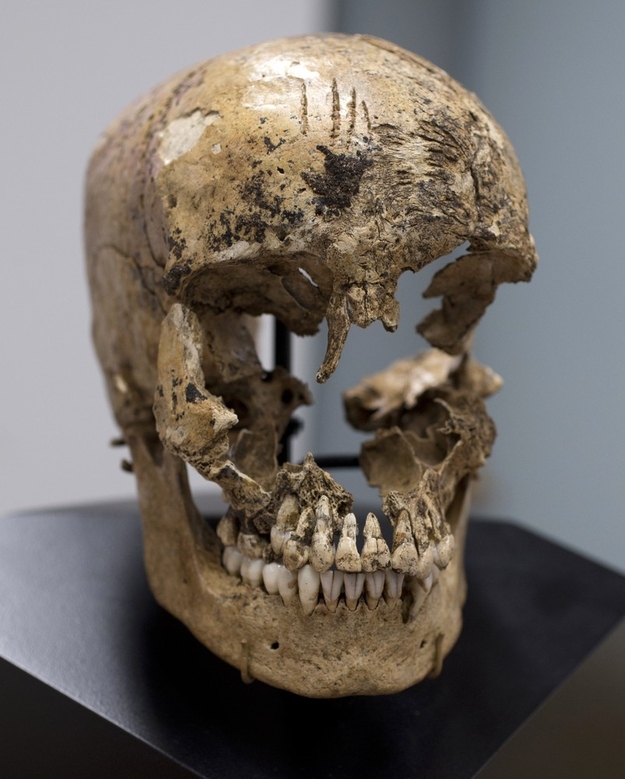
After the failed first attempts, a cleaver was used to deliver "four strikes to the back of the head, one of which split the skull in half. A penetrating wound was then made to the left temple... which was used to pry open the head and remove the brain."
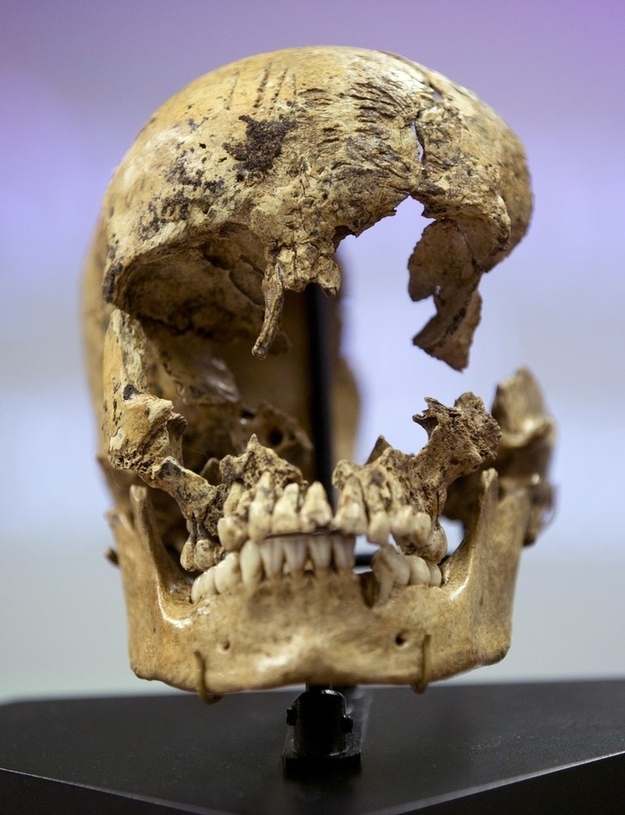
Owsley also noted the numerous cuts, saw marks, and gouges along the girl's lower jaw, made by the tip of a knife to remove facial meat, throat tissue and the tongue.
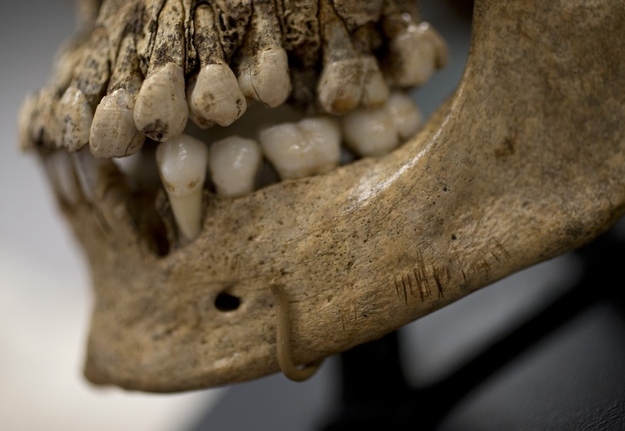
A closer look at the knife marks on "Jamestown Jane's" mandible.
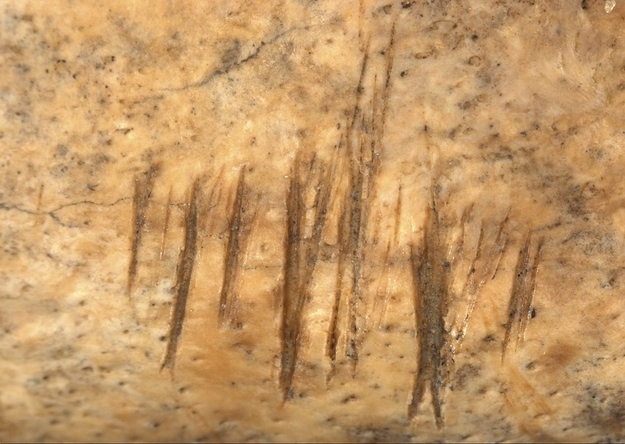
The identify of whoever consumed the girl is unknown, but Owsley said he suspects more than one man was involved, because the cuts on the victim's shinbone indicate that a skilled butcher dismembered her leg as opposed to the amateur who cut her skull.
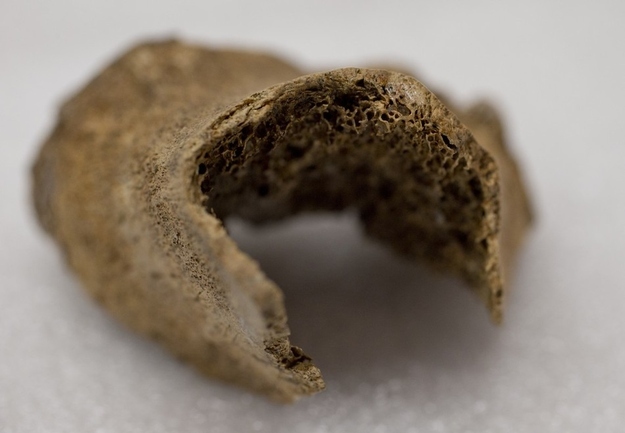
Researchers determined through molar and bone analysis that the remains belonged to a female of approximately 14 years of age, newly arrived to Jamestown from the southern coast of England.
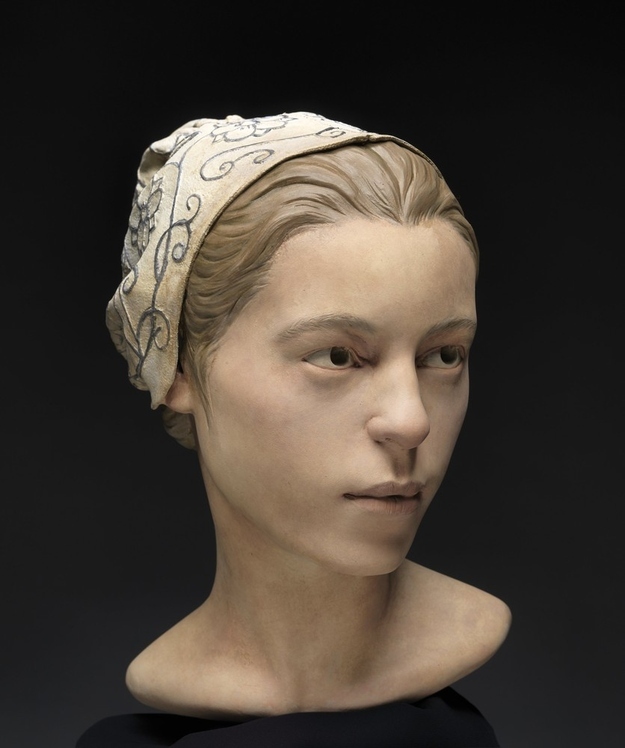
The Smithsonian Institute posted a video of the facial reconstruction process:
View this video on YouTube
Owsley speculated that Jane arrived in the colony during 1609 on one of the resupply ships. She was either a maidservant or the child of a gentleman, and due to the high protein diet indicated by isotope analysis of her bones, he suspects the latter.
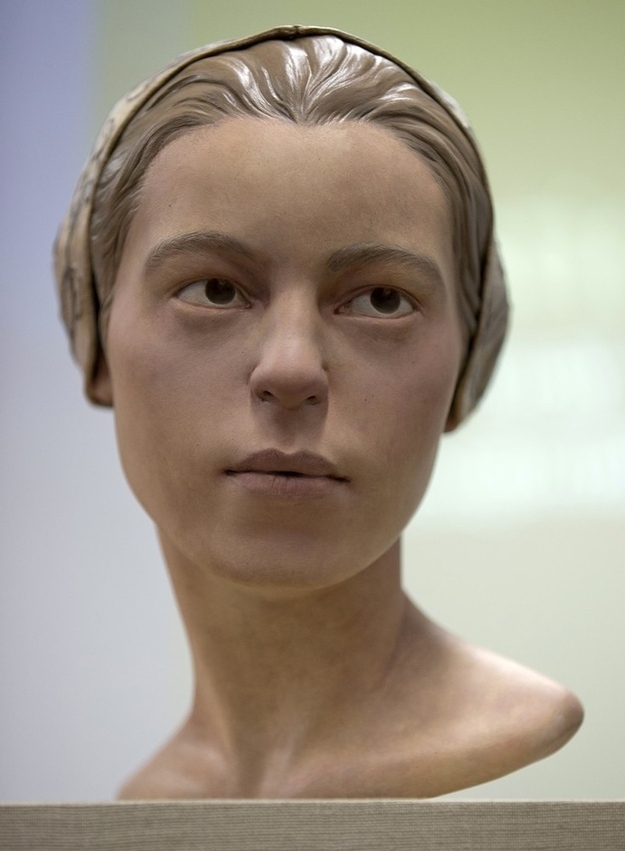
"It’s fairly convincing, now that we see [Jane], that this wasn’t the only case [of cannibalism],” Owsley said. “There are other examples mentioned here and there in the literature. So the only question is: Where are the rest of the bodies?”
